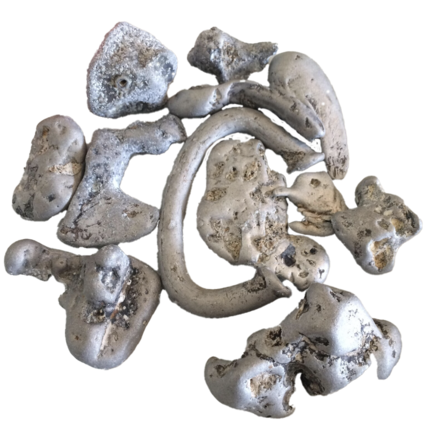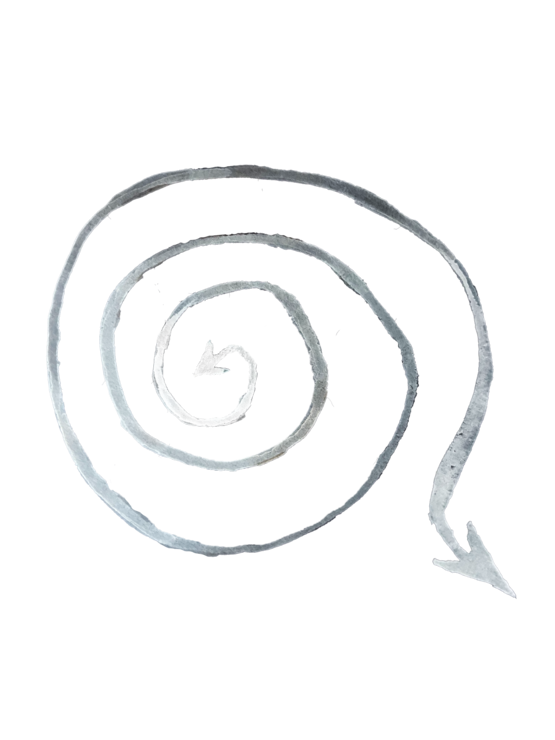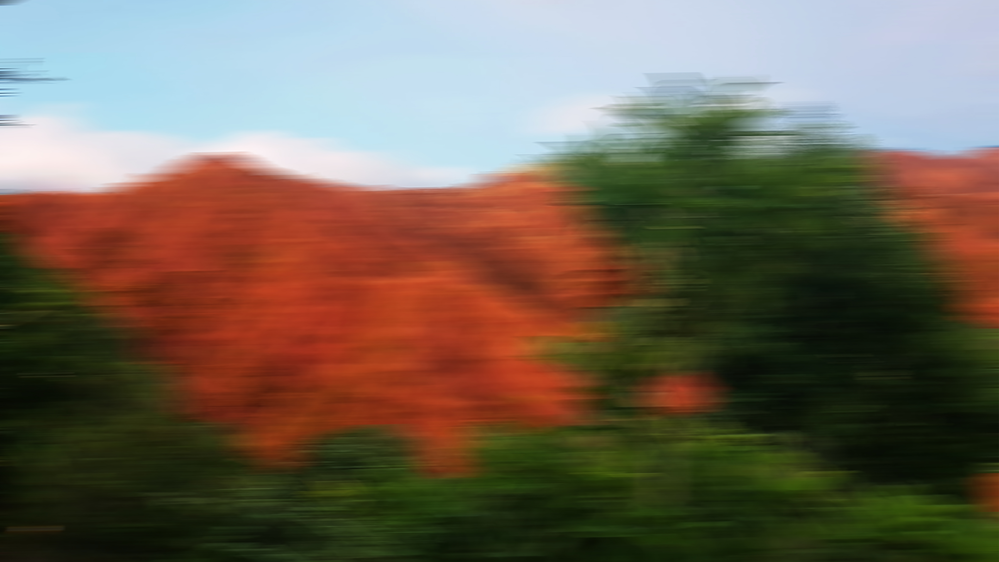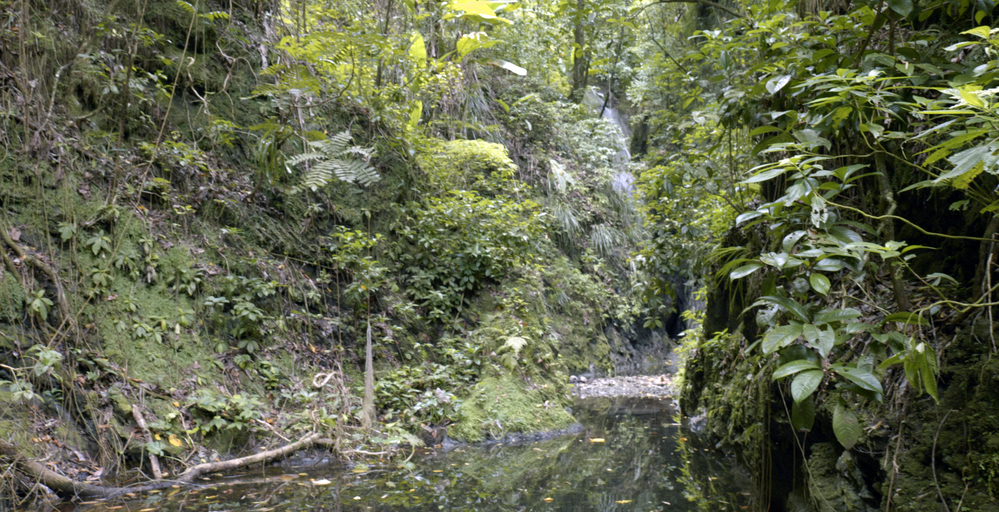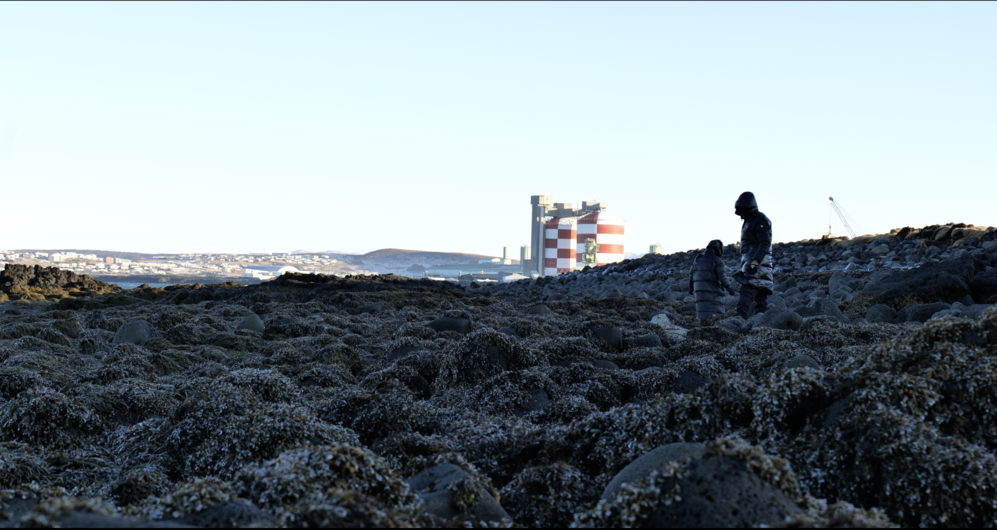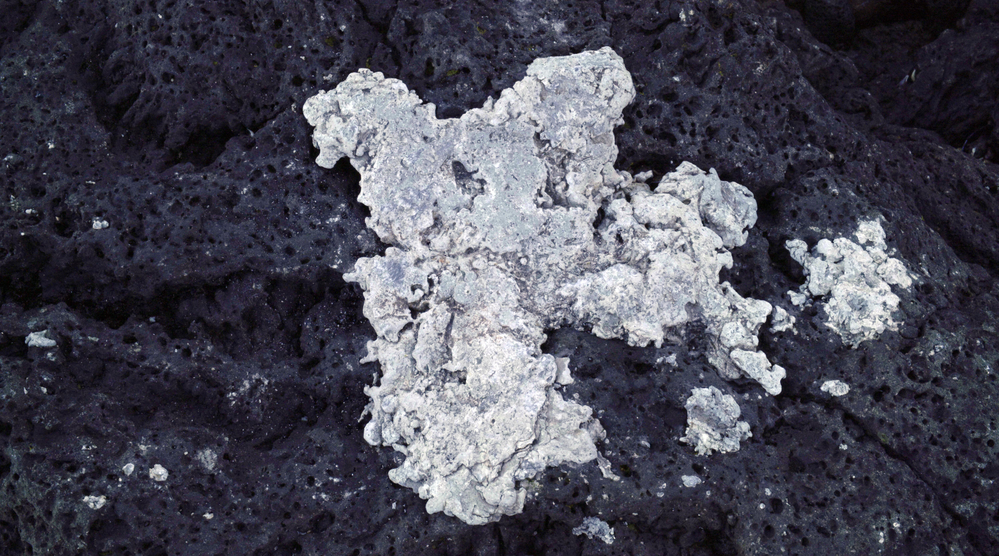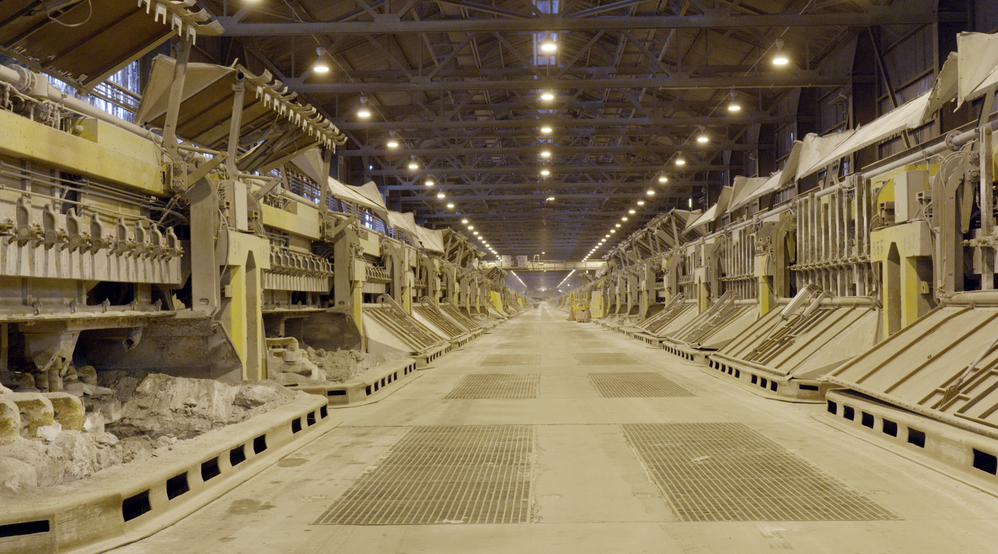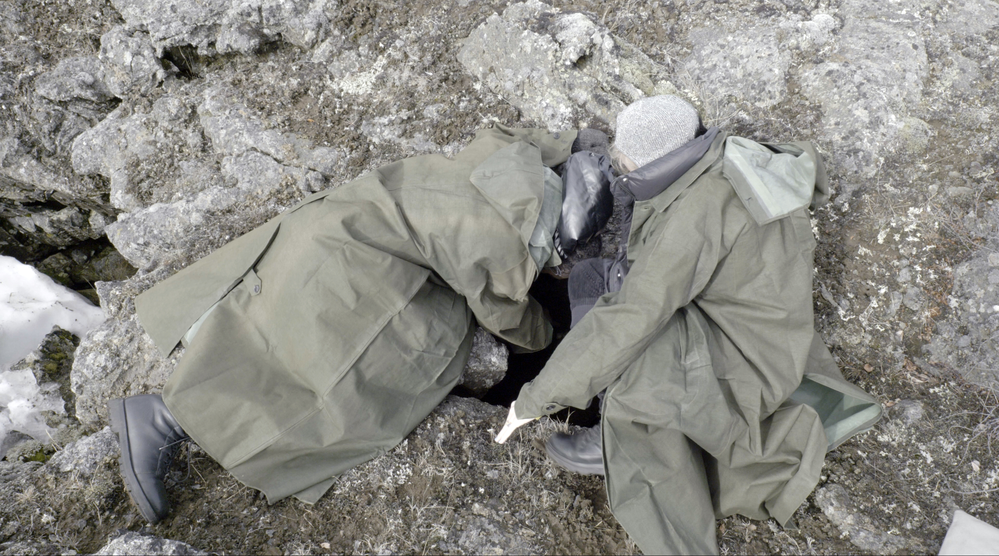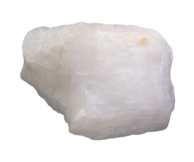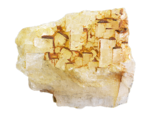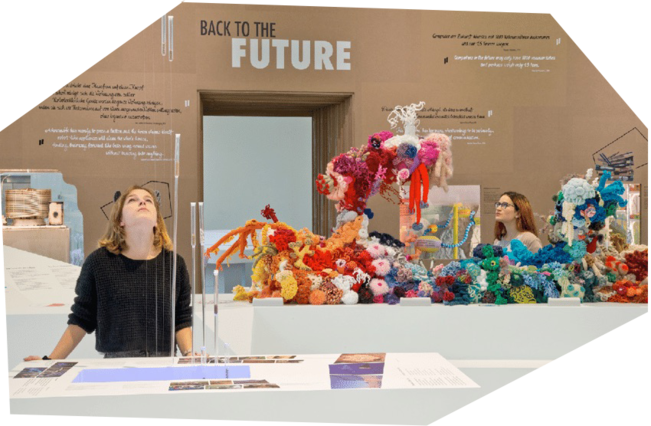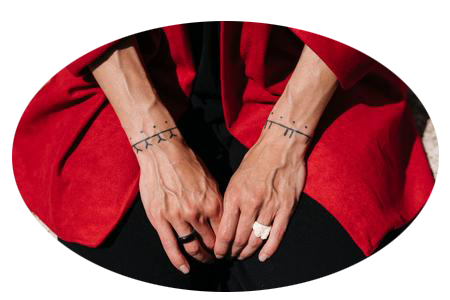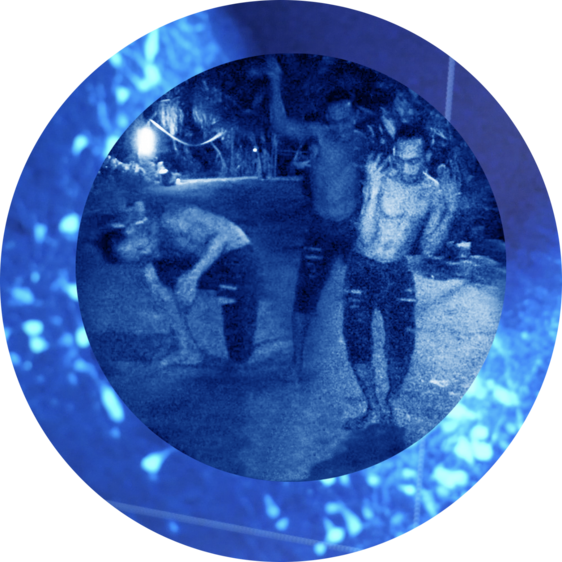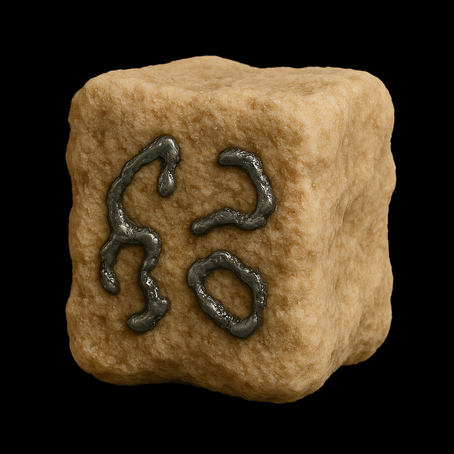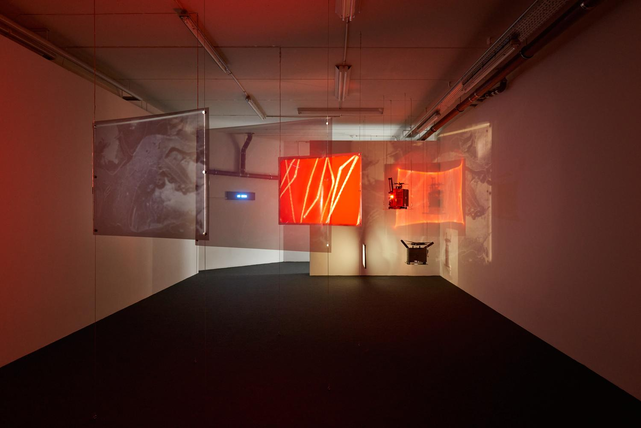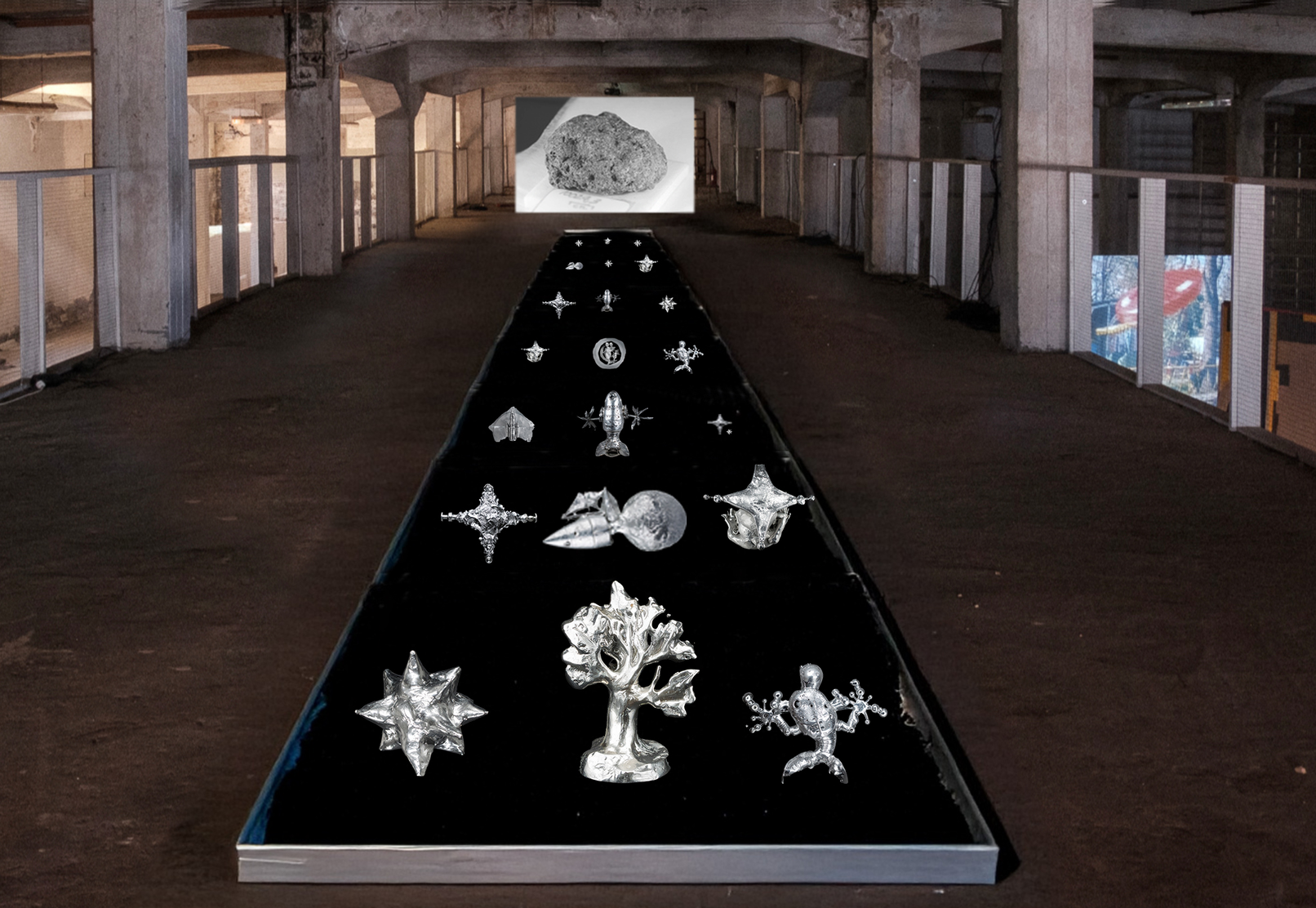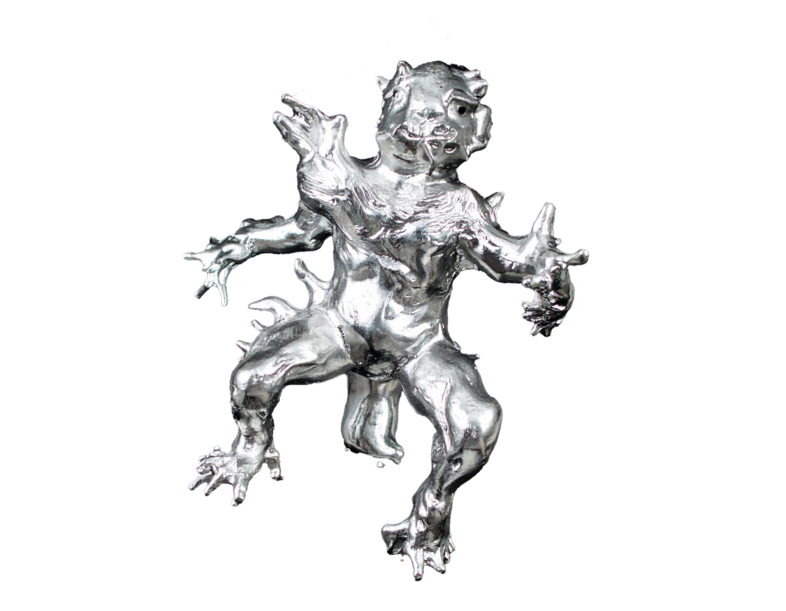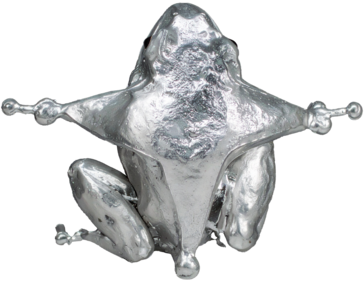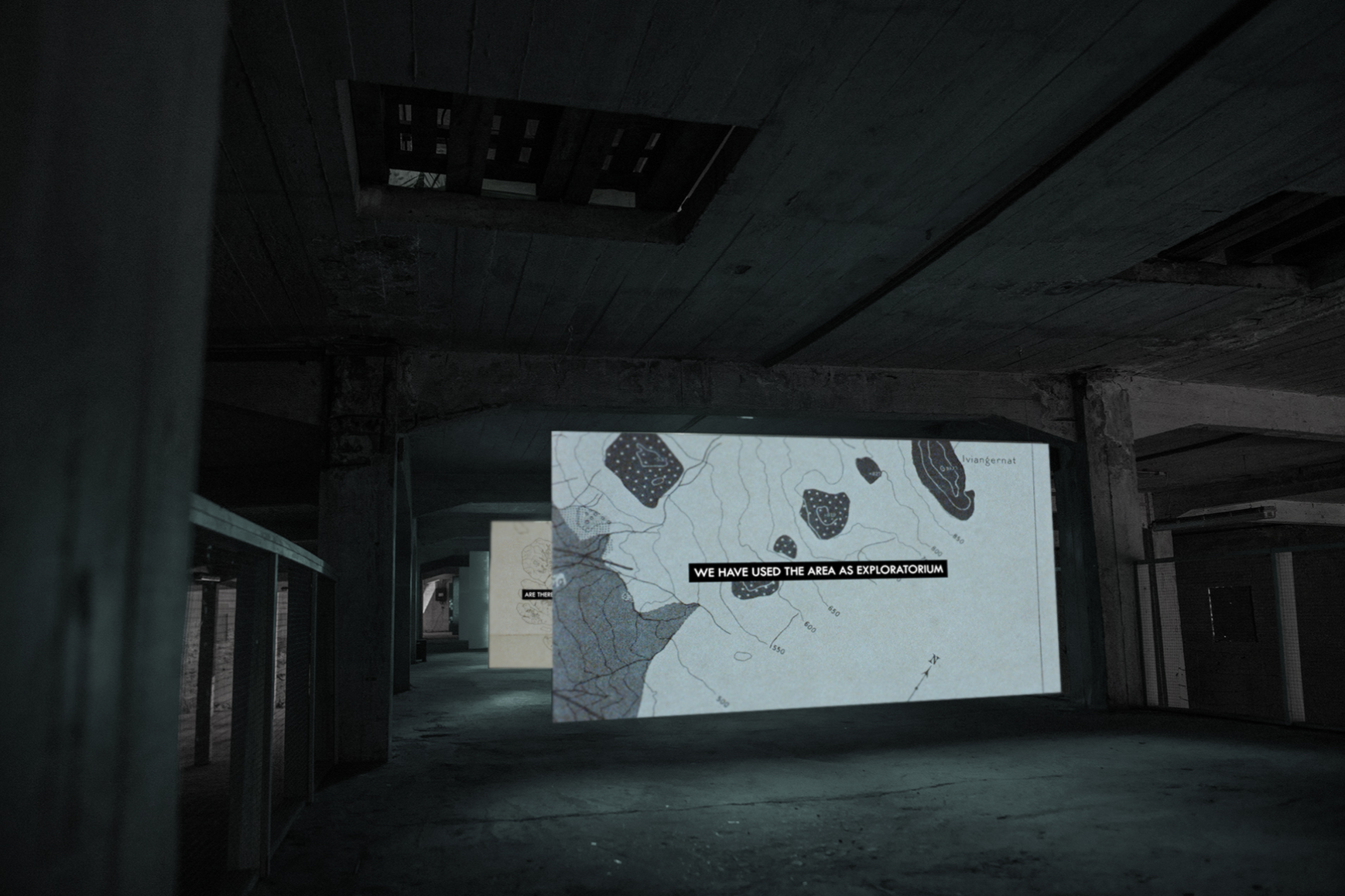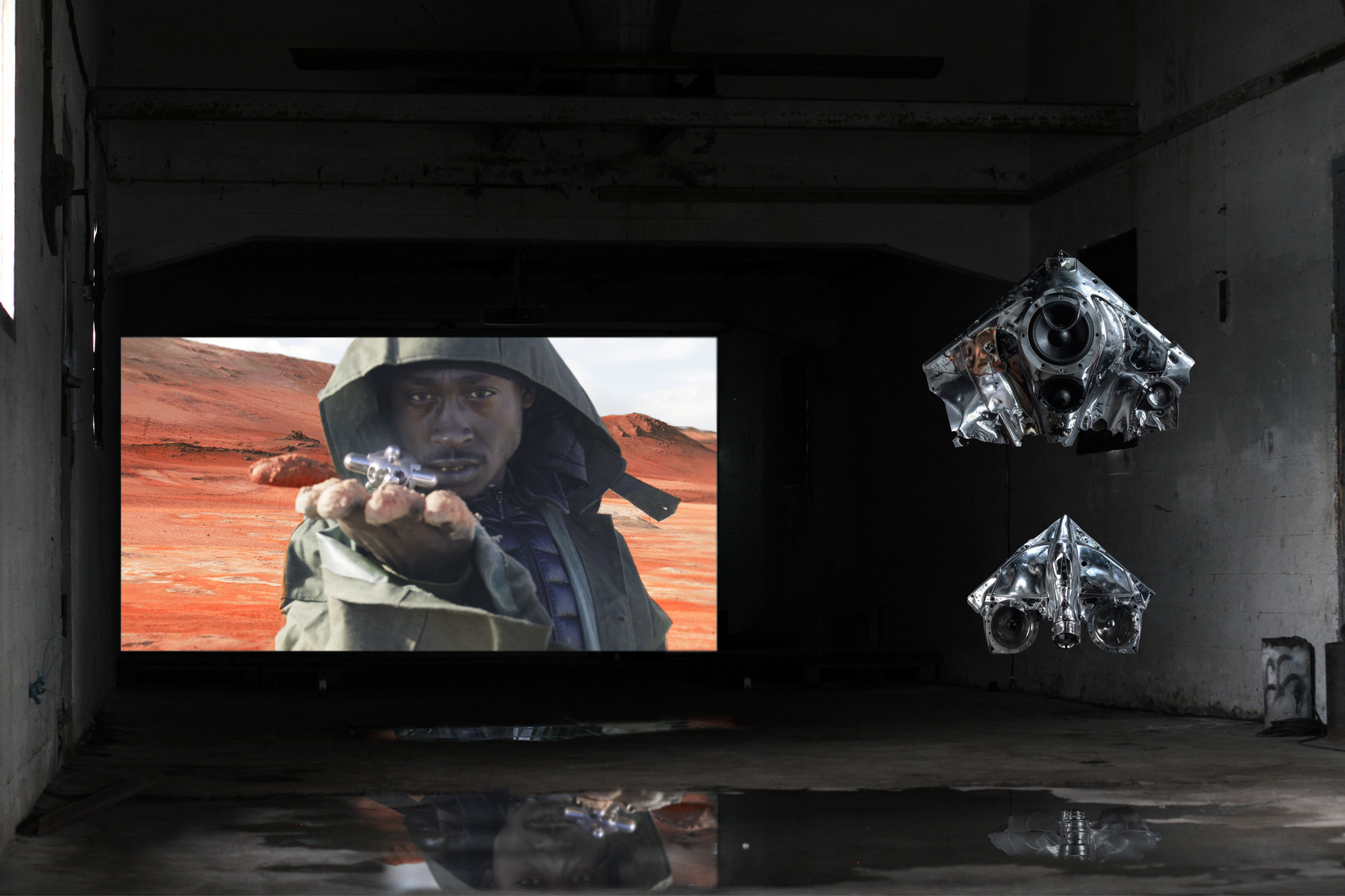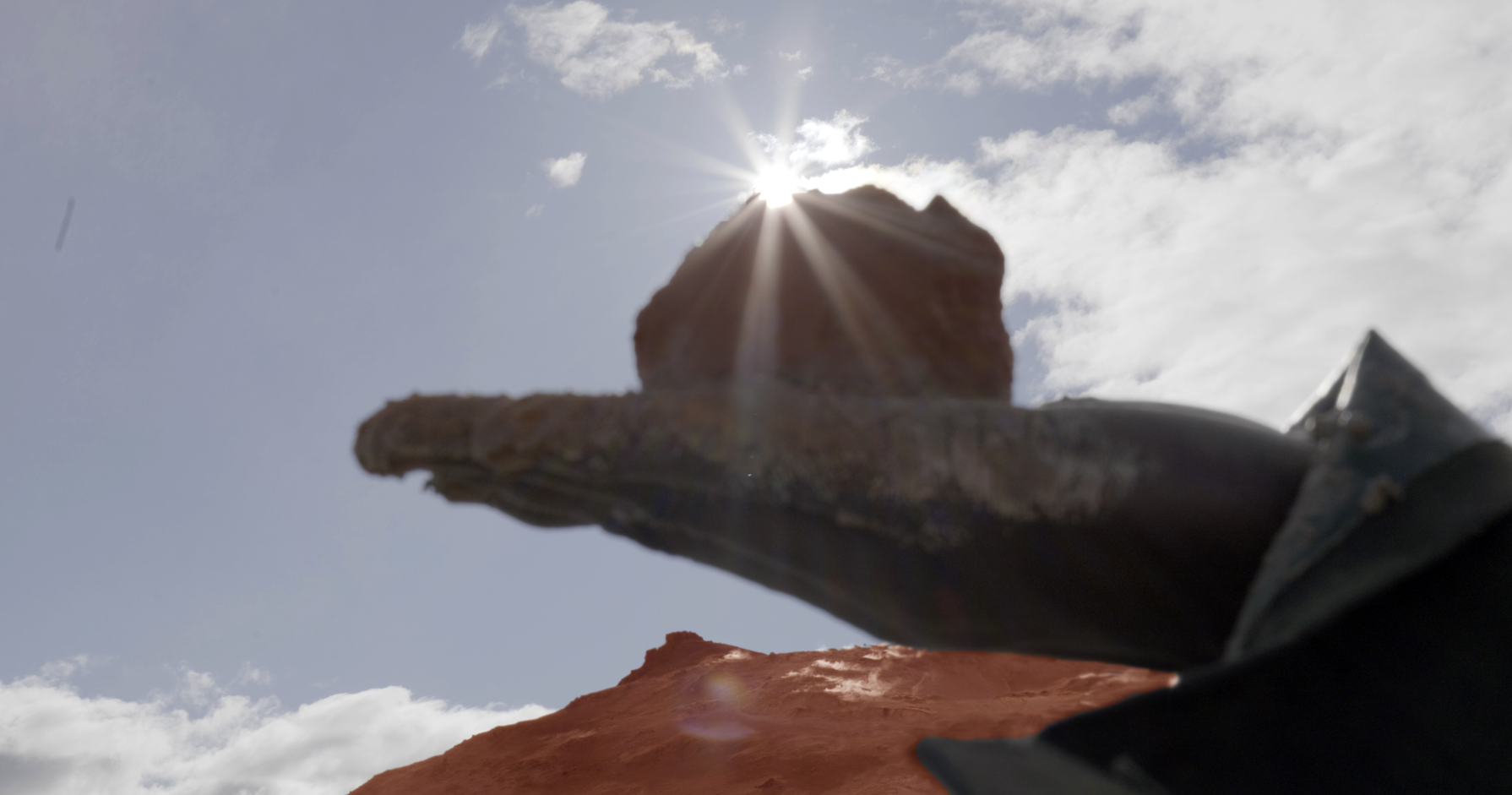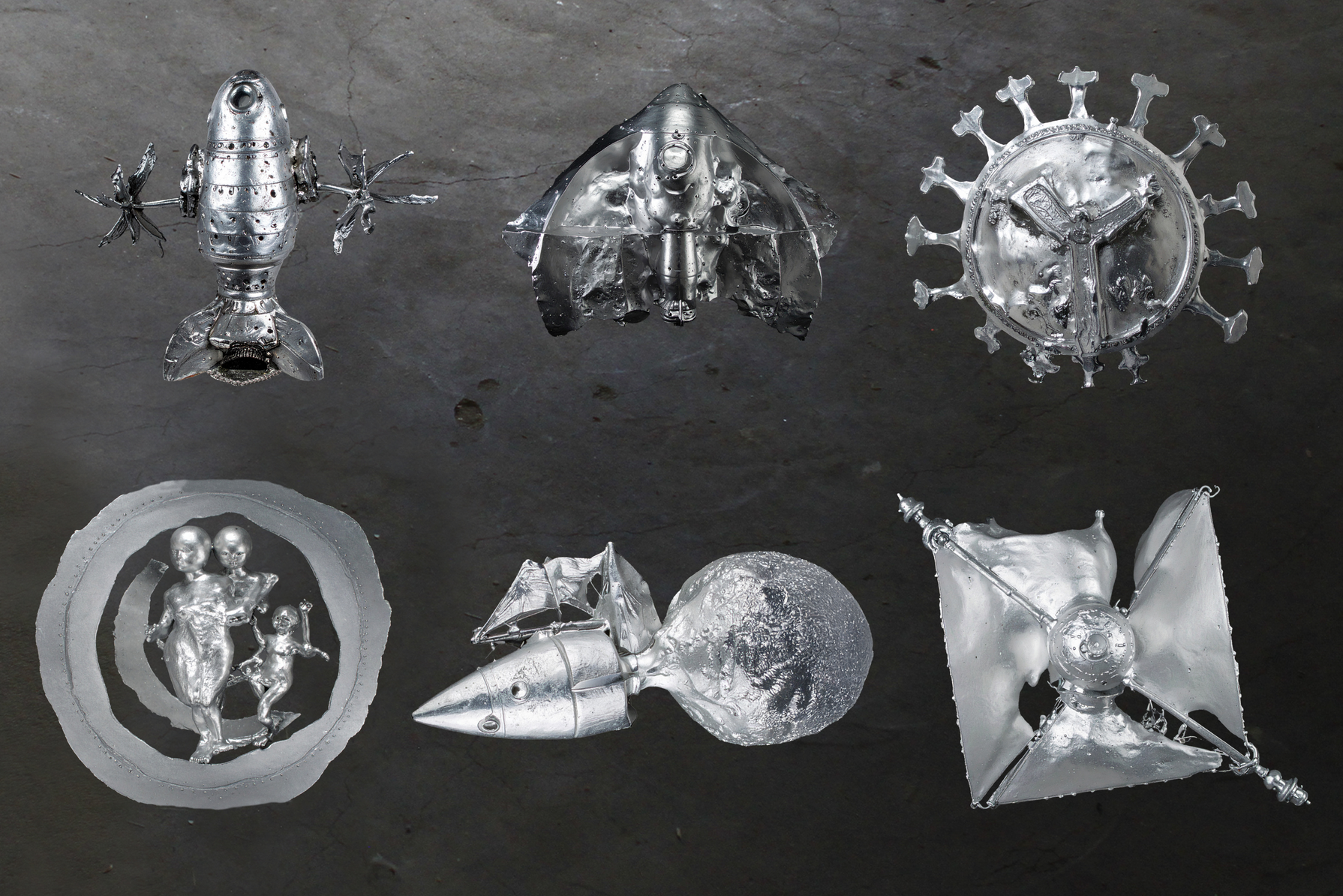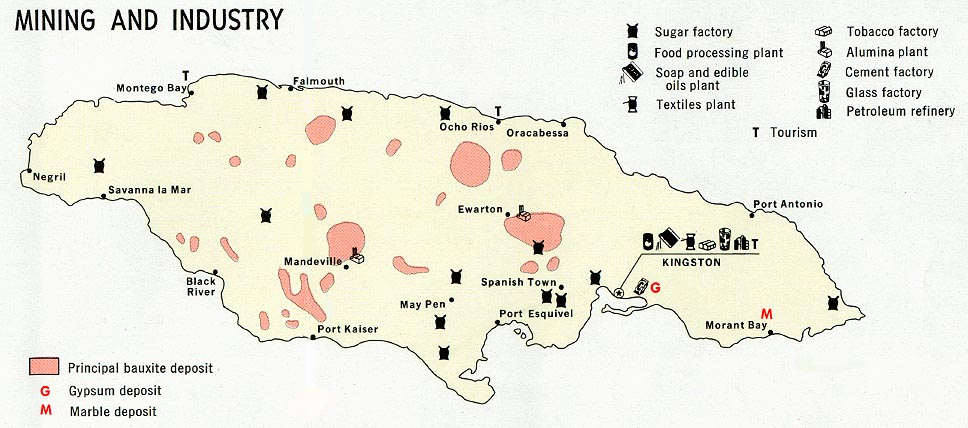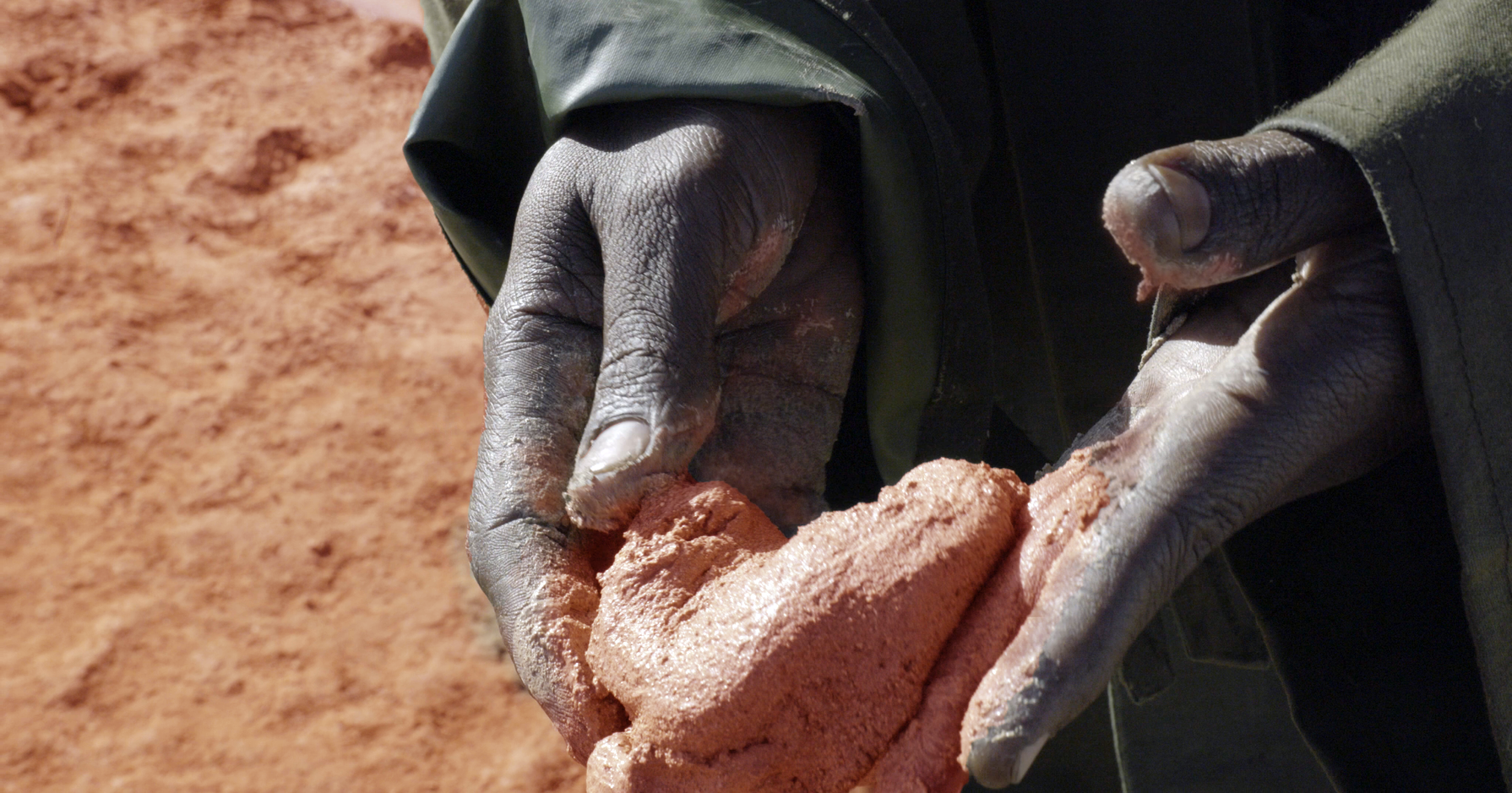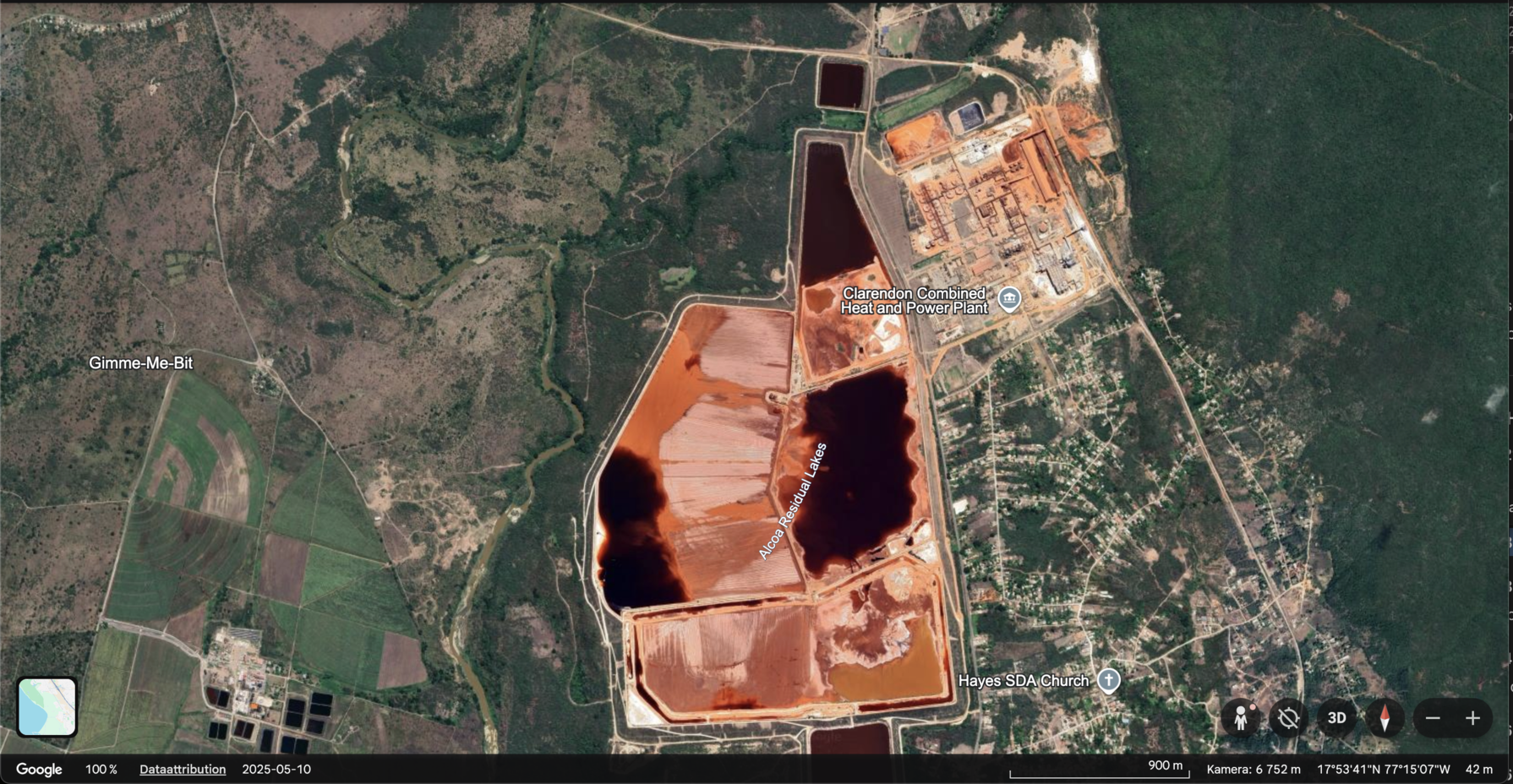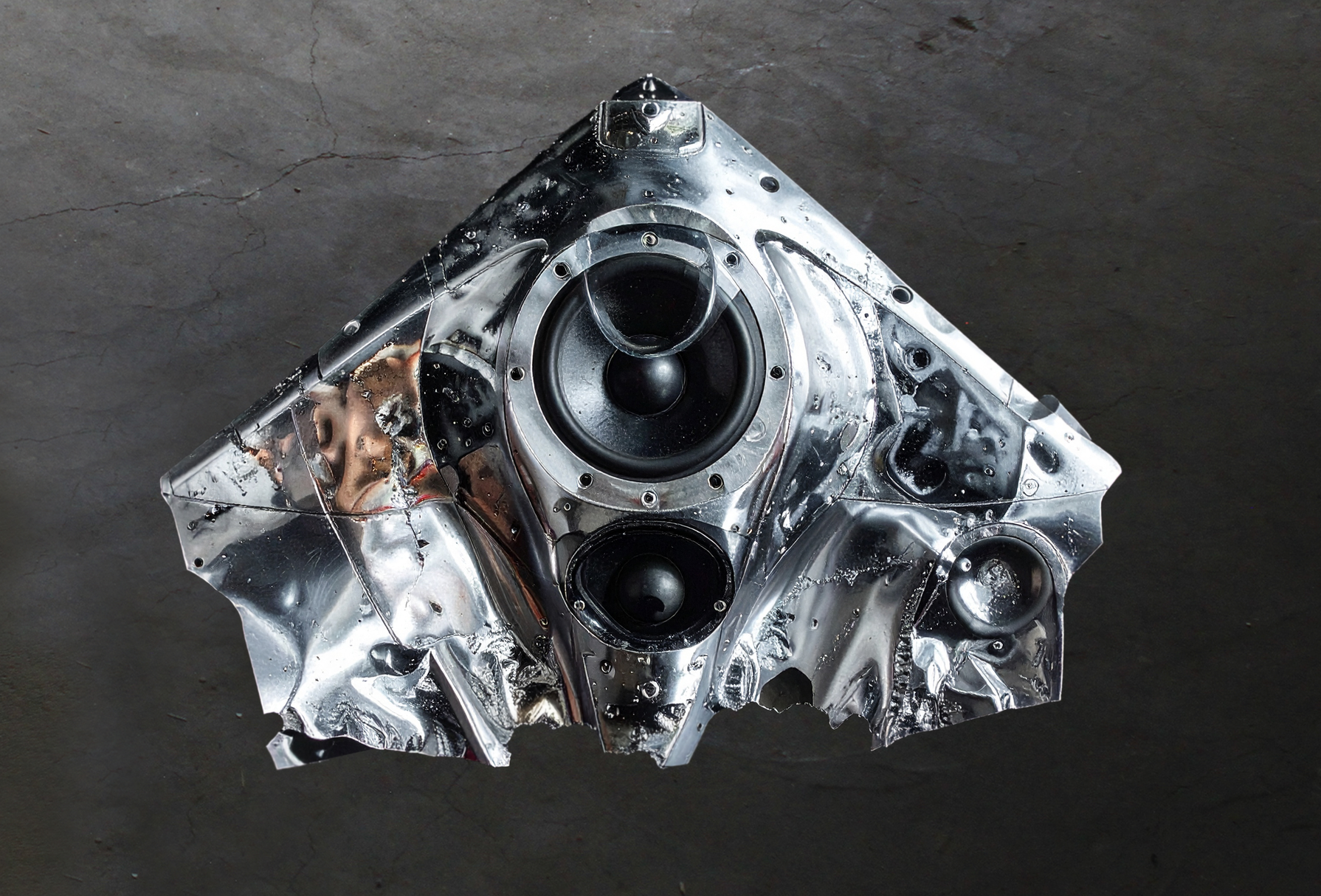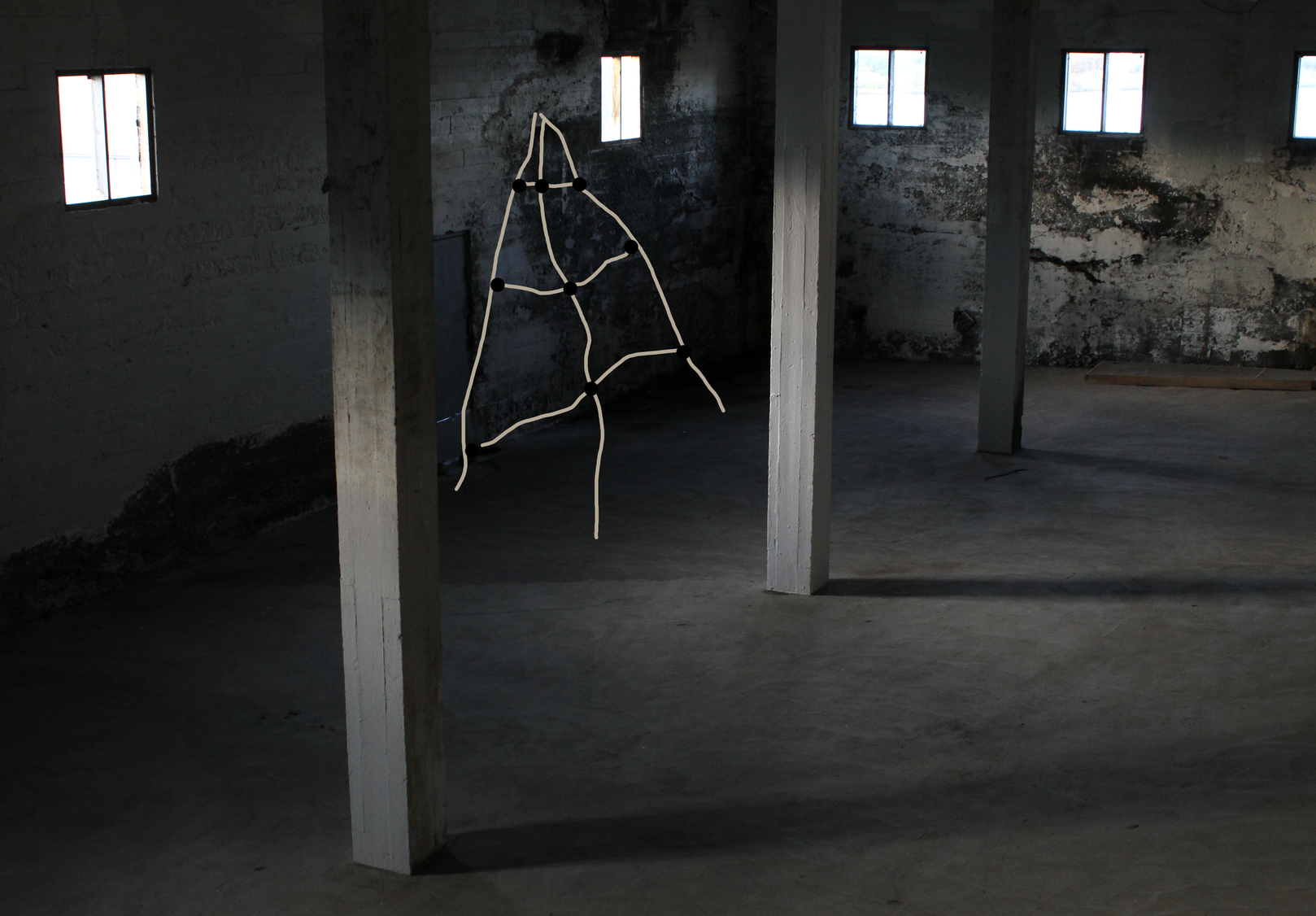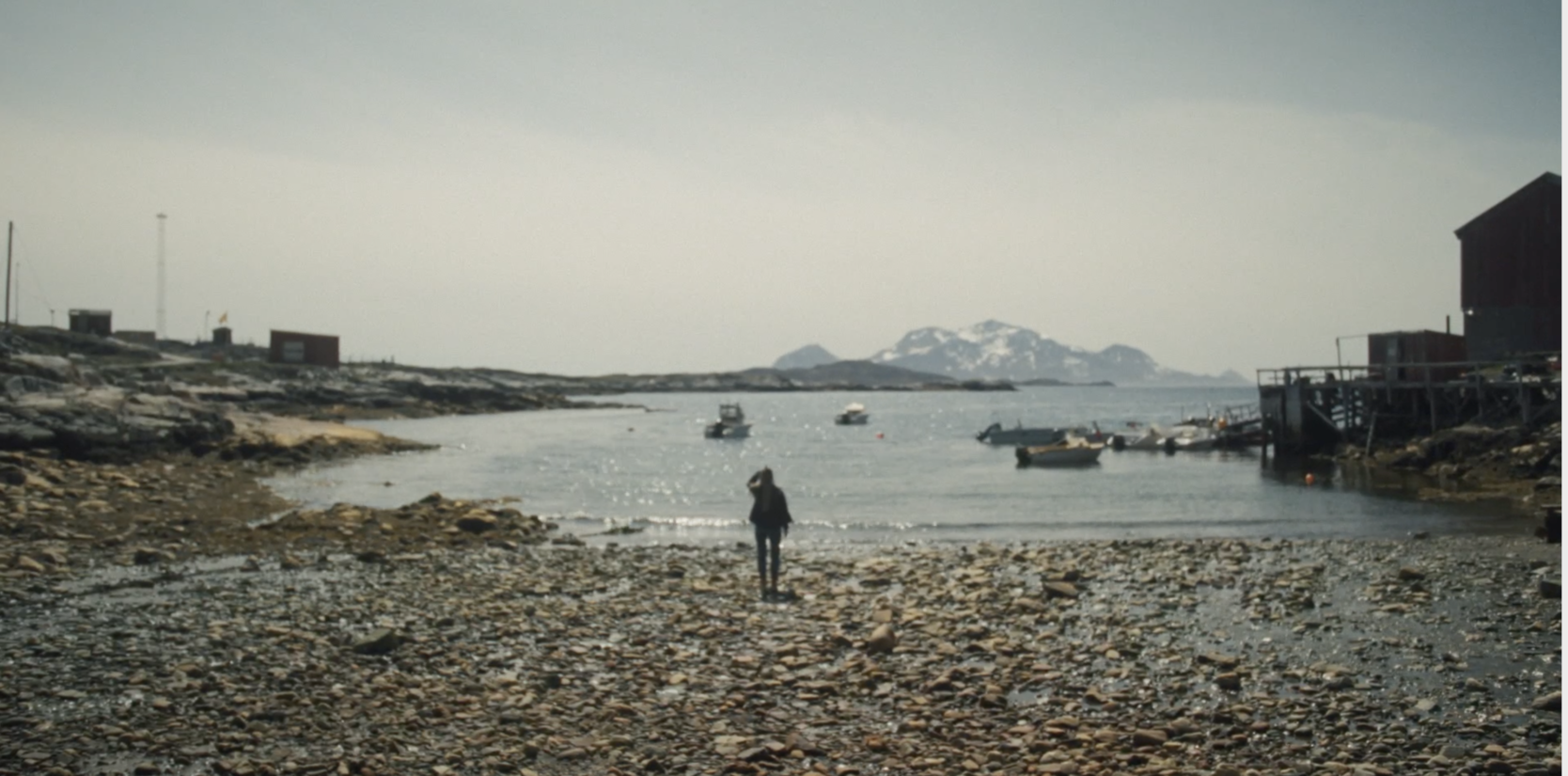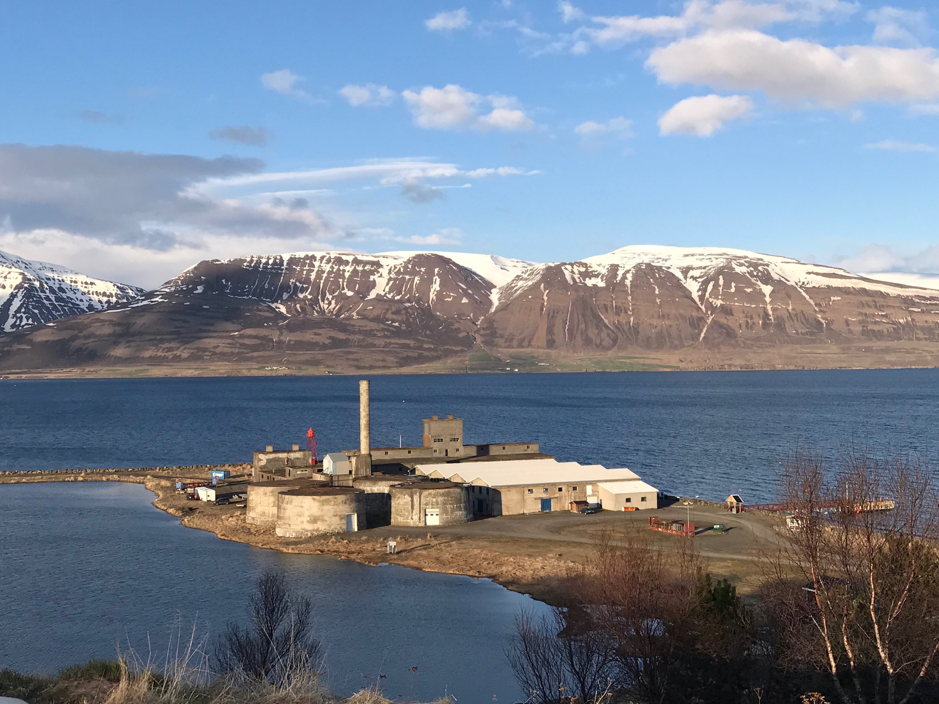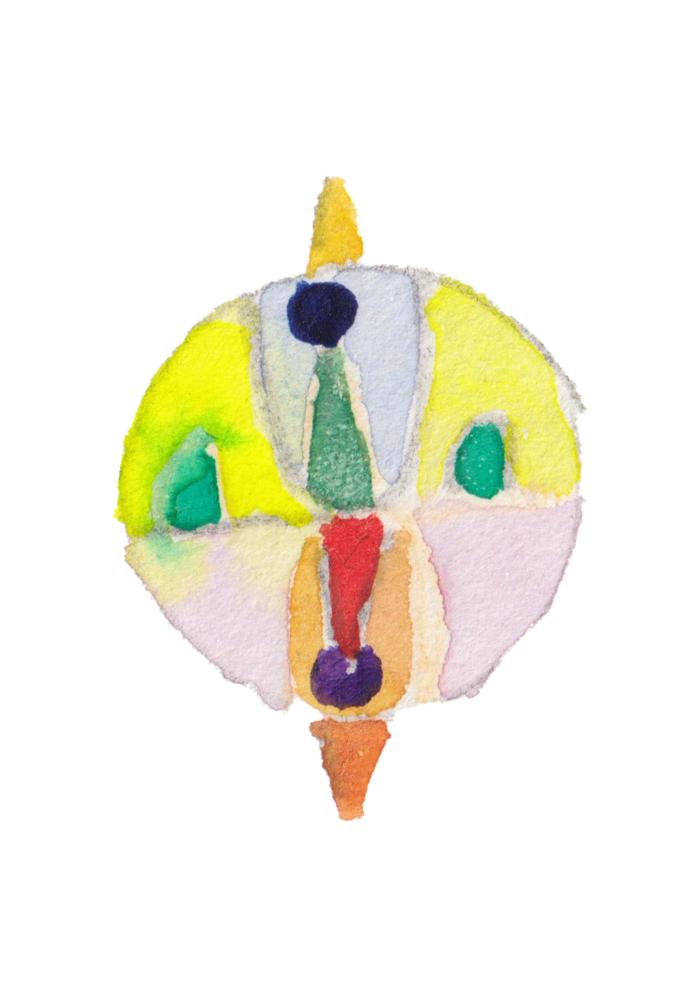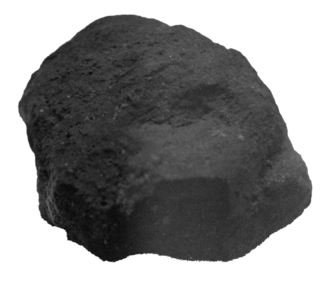Our primary focus in addressing this question will be on Kalaallit Nunaat, Iceland, and Jamaica, as these locations encapsulate key themes of the project. Together, they illustrate an interconnected narrative of colonial and neocolonial resource extraction, particularly in relation to the aluminum and space industries. The aluminum industry relies on three key components: energy, cryolite, and bauxite.
In Iceland, large-scale damming projects have devastated local ecosystems to generate the energy required for aluminum production. Jamaica has supplied bauxite and alumina (aluminum oxide) for the past seventy years to countries such as Iceland, a trade that has destroyed forests, created poisonous red mud lakes, polluted waterways, and exhausted farmland. As easily accessible land gets mined out, extraction in recent years has increasingly targeted territories belonging to Indigenous Maroon communities, as well as bordering rainforests and water reserve areas. Cryolite, once essential for lowering the melting point of aluminum oxide, was extracted from Kalaallit Nunaat on behalf of Denmark until its natural reserves were depleted
More recently, Kalaallit Nunaat’s anorthosite, a rock that is a source of alumina, has drawn attention from the aluminum industry as a potential replacement for bauxite. The intersection of the space industry with these extractive processes offers another compelling dimension to this analysis. Just as NASA used Iceland as a training ground before the first moon landing, it now conducts research in Kalaallit Nunaat, where anorthosite, also the most abundant mineral on the moon, plays a central role. Since the iconic Pale Blue Dot image was captured, space exploration has served as both a technological frontier and a philosophical mirror, prompting reflection on humanity’s place on Earth. Bruno Latour challenges the fixation on new frontiers, arguing instead for “re-landing”, a shift from seeking escape in distant worlds to re-engaging with our own planet.
We gather micro-stories from each research location illuminating historical narratives and illustrating complex colonial and extractive histories. For instance, the snail Vallonia Excentrica, believed to have arrived on Danish colonial-era sulfur trading ships, now inhabits geothermal areas near our exhibition site in Iceland. The snail is unaffected by current climate shifts and thrives only in the aforementioned warm location on the island. The snail’s spiral shell prompts us to challenge Western linear time perceptions, embracing Grace Dillon’s concept of ‘kobade,’ which suggests a “spiral of intergenerational connections” across past, present, and future timelines, an idea central to our project. We believe in art’s capacity to intertwine research findings and poetry, fostering critical awareness and inspiring audiences to envision changes toward resilient futures.
The title of the project draws its inspiration from geological samples collected by Apollo 11 astronauts during their lunar landing in 1969. These contingency samples were gathered quickly and randomly to ensure that at least one specimen would return with them if the mission encountered difficulties. Prior to embarking on this space journey, these astronauts underwent training in Iceland where they learned how to identify minerals and elements geologically. This training and the concept of a contingency sample provide an opportunity for us to reflect back on our own planet: What is Earth’s contingency sample as we face what many perceive as end of times? We approach this question through T.J.Demos’ idea of ‘radical futurism,’which challenges the seeming inevitability of capitalist realism. Instead of viewing the contingency sample merely as a symbol for quick acquisition – “spot, grab and go” – we propose seeing it as a catalyst for alternative narratives. We aim rather to craps things at the root, to break with the predicated and colonized future, the prolongation of our capitalist present with the “ visions of justice-to-come emerging from traditions of the oppressed” and thereby “reanimating suppressed past as much as inventing potential futures” (Demos 2022).The capitalist ventures are continuing in outer space and it is by looking at the material consistency of the equipment and technology as well as the fuel source of those rockets that we have found aluminium of interestwhen looking for the radical futurism contingency sample. Aluminium has long been representative of the future. Narrations surrounding the metal regarding modernity and vision of future are here replaced with a question: Who has the right to produce the future?
Research trip funded by the Nordic Cultural Fund Globus Opstart, during which Olando Whyte and Rut Karin Zettergren visited sites in Jamaica close to bauxite mining and sulfur-rich healing springs.
Still image of bauxite soil and vegetation viewed from a car window near Milk River, Jamaica, 2023. Photo credits: Whyte&Zettergren.
Still image of SPL fused with lava stone at a beach in Straumsvík, Iceland, 2024. Photo credits: Rut Karin Zettergren.
still image of opened smelters in SAL aluminium plant, Straumsvík, Iceland, 2024. Photo credits: Whyte&Zettergren.
Still image Whyte&Zettergren looking for SPL in Straumsvík, Iceland, 2024. Photo credits: Bryndís Björnsdóttir.
Still image of Whyte&Zettergren conducting geological training at sites near Lake Mývatn, Iceland, 2022. Photo credits: Bryndís Björnsdóttir.
Still image of Whyte&Zettergren holding one of the Apollo 11 mission patches at the Exploration Museum, Húsavík, Iceland, 2022. Photo: Bryndís Björnsdóttir.
Research trip funded by the Nordic Cultural Fund Globus Opstart, during which Olando Whyte and Rut Karin Zettergren visited Iceland. Together with Bryndís Björnsdóttir, they visited aluminum plants near Reykjavik and a beach affected by waste from the plants.
Research trip to Húsavík, Iceland, during the project Immune, where Bryndís Björnsdóttir, Olando Whyte, and Rut Karin Zettergren visited sites where astronauts undertook geological training before the Apollo 11 mission.
The essay The Soil, the Ocean and the Sample by Rut Karin Zettergren includes scene descriptions and reflections from research trips to Jamaica and Iceland undertaken as preparatory studies for The Contingency Sample. Published in May 2025 in Unfolding Island Ecologies, a book that brings together essays by artists, curators, and researchers examining ecological interdependence, extractivism, and artistic practices.
WORKSHOP IN JAMAICA
Will take place in Maverley Hughenden Football Club - Youth club center. The casting process will be done in collaboration with David Thomas who is experienced in local techniques. The children will be using bauxite clay for the sculpting side of the workshop. The workshop will be lead and supervised by Olando Whyte and Rut Karin Zettergren.
MAVERLEY HUGHENDEN FOOTBALL CLUB
Maverley Hughenden Football Club is a community-rooted team based in Kingston, Jamaica, with a proud history of using football as a tool for social connection, empowerment, and youth development. Established to serve the Maverley and Hughenden neighborhoods, the club provides opportunities for young people to develop discipline, teamwork, and leadership both on and off the pitch. Beyond competition, Maverley Hughenden functions as a cultural hub, fostering creativity, resilience, and community pride through sport and outreach initiatives. The club is committed to building bridges between sport and the arts, seeing both as vital avenues for self-expression and community transformation.
WORKSHOP IN KALAALLIT NUNAAT
The workshop will be formulated with Naja Dyrendom Graugaard along with Bryndís Björnsdóttir. Ceramicist Antonía Bergsþórsdóttir who has been working with Greelandic community for the last eight years will be join them to guide the youth in the workshop itself and the use of Greelandic glacier clay which Bergþórsdóttir has been studying for the last years. Illorput community center in Nuuk is being contacted as a site for the workshop to take place.
ILLORPUT
Illorput is a cultural and community house located in the Nuussuaq district of Nuuk, Greenland. Serving as a hub for creativity, dialogue, and collaboration, Illorput provides space for artistic projects, workshops, and social gatherings. With a flexible hall, kitchen facilities, and capacity for up to 80 people, Illorput supports local artists, cultural organizations, and residents in developing events that strengthen community ties and nurture Greenlandic culture.
ANTONÍA BERGÞÓRSDÓTTIR
Antonía Bergþórsdóttir (1995) is a ceramicist and multidisciplinary artist, founder of FLÆÐI art gallery, and MÓR an accessible ceramic studio in Hafnar.haus. She studied Pottery at the Visual School of Art in Reykjavík and graduated in 2020. During an internship in France in 2019, she studied porcelain, plaster making and design. She is in the fine art duo Augnablikin with Íris María Leifsdóttir. She specializes in raw materials, specifically found materials in her surroundings and has researched materials such as glacial clay in Greenland and Iceland since 2018. Her interest lies in the opportunities in local materials, she aims to find sustainable and meaningful ways to create and believes that by taking part in the process of the materials you use, you can strengthen your connection to work and nature. Currently she is working on creating the Icelandic tiles in collaboration with Sei architect studio. She has held numerous solo exhibitions, group exhibitions,lectures, workshops and other happenings in Iceland and abroad.
WORKSHOP IN ICELAND
Workshop is led by organiser and artist Bryndís Björnsdóttir and Bergsveinn Þórsson. Samlagið creative workshop center will be hosting the workshop
in collaboration with the project. Bergsveinn Þórsson will engage with the participants in a dialogue and reflections on the future. Kamila Henriau will be supervising the
casting part of the workshop, giving the participants insight into such process and assisting them with building the mould for their casting process. Participants in workshop in Iceland
BERGSVEINN ÞÓRSSON
Bergsveinn brings experience in organizing and managing workshops on developing future imaginaries, from rapid social prototyping to speculative futures scenario
making. He was in the curatorial team for the exhibition Beyond Barcode at the
Interkultural Museum in Oslo. The exhibition making process involved an extensive collaboration with artists, designers and local youths. He organized and hosted
workshops co-creating future scenarios of local neighborhoods. Through his work with the CoFutures research group he has experience developing methods and organizing
seminars on futures-making. Highlighting creative and speculative futures thinking has the potential expands possibilities and brings an important diversification to the constantly reduces sets of imagined futures. Exploring alternatives and imaginative
future imaginaries is essential to tackling contemporary and future societal, economic and environmental challenges.
KAMILLA HENRIAU
Kamilla Henriau holds a BA in Product Design from the Icelandic University of the
Arts (2023) and a diploma in web design. She prefers working closely with people in a hands-on manner. Her interest in human/material connections has guided both her previous and ongoing projects. In collaboration with the Textile Lab in Blönduós, Kamillaresearched unused Icelandic materials, including secondary wool and horse hair, exploring their potential as natural upholstery materials. She investigates traditional methods through the lens of new material combinations and machinery. Currently, she is focused on exploring the Icelandic material aluminum. Her work involves hands-on experimentation with the material’s positive recycling properties on a small scale, reshaping it into new forms and objects using sand casting techniques.
SAMLAGIÐ
Samlagið is dedicated to nurturing creative thinking and building a vibrant, imaginative community, with a strong focus on empowering young people. Through a range
of courses and workshops, the organization encourages youth to explore their
creativity, experiment boldly, and connect with others in a supportive and collaborative environment. Its mission is to provide a space where the next generation of artists,
thinkers, and makers can grow and thrive.
The workshop, Shaping Futures – Contingency Samples in Clay and Metal, for young people aged 11–15 is conceived as a microcosm of the larger project. It asks: What would Earth’s contingency sample be, if we were to imagine futures beyond capitalist extraction and colonized time? Who gets to produce the future? Partici- pants in Jamaica, Kalaallit Nunaat, and Iceland will reflect on their own place within these questions, grounding radical futurism in tactile experience. The process unfolds over two days.
On the first day, participants are invited to work with locally sourced clay. The session begins with a conversation about visions of the future, not the sleek, linear future of rockets and corporations, but futures imagined from suppressed histories, local knowledges, and intergenerational spirals. With these stories in mind, each participant shapes a clay form that embodies their idea of a contingency sample: a symbol, fragment, or vessel that carries what must not be lost as we move forward. The day closes with a circle of sharing, where the youth articulate the meaning of their works and begin to
see their own futures reflected in one another’s.
On the second day, the sculptures undergo transformation. The group is introduced to the process of aluminum casting, where their fragile clay works become molds for something more enduring. They witness, but do not partake in, the casting process, seeing the soft earth they shaped the day before replaced by molten metal, itself entangled in long histo- ries of extraction and futurity. When the aluminum forms are revealed, there is a moment of collective recognition: these are no longer only individual visions, but a constellation of youthful voices, hardened into a material that has long been used to tell stories of modernity and progress.
The workshop closes with reflection. Participants return to the question of contingency: What have we carried into the future through this act of making? What is lost in the tran- slation from clay to metal, and what is gained? Their words, recorded as short statements, drawings, or video fragments, remain with them until the end of the project. The sculptures irst travel to Verksmiðjan, where they are exhibited together as a cross-cultural archive of youthful futurisms, a counterpoint to the extractive histories of aluminum and a re-landing of imagination on Earth. After the exhibition, the exchange takes place: each participant re- ceives a copy of their own sculpture, along with a copy of another participant’s sculpture and their accompanying statement. Particular emphasis will be placed on fostering clear and respectful communication with the parents and guardians of the youth engaged in the workshop. We may wish to document cer- tain aspects of the process, in which case prior written consent will be sought. It is important to note that the youth will not participate directly in the casting process itself. Depending on the facilities available at each site, they will either be offered an explanation of the process alongside a visual demonstration, or they will observe the process once, after which the actu- al casting will be carried out at a later date. This approach ensures that the highest standards of safety and security are upheld for the duration of the workshop.
The collection of small sculptures from the workshops will be presented in the exhibition. It will add in perspectives on what a young generation imagines as the contingency samples to be preserved for the future: symbols, fragments, or vessels that hold what must not be lost as we move forward.
Björnsdóttirs first work for the exhibittion address Iceland’s role in the aluminum in-
dustry through its energy resources, while tracing wider histories of extraction, memo-
ry, and interconnected geographies. One wall installation presents flowing, water-like
forms that evoke hydroelectric power and connect to the history of the exhibition site.
Drawing on Jeffrey David Feldman’s concept of the “contact point,” which highlights the
sensory dimensions of colonial history, plaster currents are dipped in a solution that
grows alum salt crystals on the gallery walls. Long valued as a mordant in dyeing and
medicine, alum was also central to the early history of aluminum: before the metal could
be isolated in the nineteenth century, alum was the form through which aluminum first
entered human use. These crystalline formations link the ancient presence of mineral
salts, formed over geological time and traded for centuries, to the modern industries
of aluminum smelting and hydroelectric power. They also recall the exhibition space
or that is the Verksmiðjan (a former herring factory) origin story, when seawater was
heated and mixed into the concrete to withstand the cold. The work honors the Taíno
people of the Caribbean, who mapped the stars as sea creatures, inverting sky and ocean. In a building literally made from the sea, the installation echoes this perspective: looking upward as entering the depths.
The second work reflects on the interconnection of Greenland, Iceland, and Jamaica through the aluminum industry and transatlantic shipping. Rope ladders, recalling those once used on ships, are suspended in the space. Rendered as abstract, drifting forms, they evoke webs of time and history rather than serving a practical function.
Björnsdóttir will also present a work consisting of six photographs suspended in the
space with black chains. The images depict people’s hands holding stones collected by
Apollo 11 astronauts during their training in Iceland, where they learned to read the
land and its geology in preparation for the moon landing. The work reflects on the idea
of the “sample,” not only as a physical specimen but also as a subjective stance: a way of marking what is considered significant to carry forward. By linking human gesture, geological fragments, and space exploration, the piece draws attention to the entanglement of earth, technology, and imagination.
This work draws its inspiration from a tradition found across cultural contexts in which molten metal, often tin, is poured into water on New Year’s Eve. The unpredictable, abstract forms that emerge from this rapid transformation are then “read,” their contours and shadows interpreted as omens or signs of what the coming year might hold. This practice, at once playful and profound, proposes that futures are not linear or predetermined but can be glimpsed through acts of imagination, interpretation, and chance
The Splash series brings this tradition into dialogue with the industrial and colonial histories of aluminum. At the center of the work is a single casting, produced not as divination but as commemoration: it was poured during the inauguration of the aluminum smelter at Grundartangi in Iceland, and has since been preserved at the local heritage museum, Byggðasafnið á Görðum. Taken from the heart of Iceland’s aluminum industry, a site shaped by extractive logics and ecological disruption, the casting now becomes a speculative object, open once more to interpretation.
Seven individuals from Jamaica, Kalaallit Nunaat, Denmark, and Iceland, artists, healers, musicians, lawyers, and storytellers, have been invited to offer their readings of this casting. Each will contribute an audio reflection, drawing on their own practices and perspectives to explore what futures might be glimpsed in its contours. Together, their voices layer onto a 3D video scan of the object, transforming the smelter’s commemorative relic into a polyphonic oracle.
The invited participants include:
Michelle Eistrup (Denmark) – A Danish–Jamaican artist working across film, installation, and sound.
Claudia Ashanie Wilson (Iceland) – An Icelandic–Jamaican immigrant rights lawyer, activist, and writer.
Esther Figueroa (Jamaica) – Filmmaker and author of Fly Me to the Moon (2019), a documentary tracing Jamaica’s role in the global aluminum industry.
Alex Moore-Minott (Jamaica) – A traditional Myal priest and Maroon leader.
Josef Tarrak-Petrussen (Kalaallit Nunaat) – Rapper and performer, whose music interweaves Greenlandic identity and resistance.
As with the tradition that inspires it, the Splash series does not seek definitive answers but instead opens a field of possibility. The casting, once a symbol of industrial progress, becomes a catalyst for alternative narratives: of justice-to-come, of radical futurisms, of Earth’s own contingency samples. Through sound, image, and collective interpretation, the work proposes futures that refuse the predicated and colonized, and instead spiral outward from traditions, memories, and suppressed histories.
This work is expected to be apart of the research platform Contact Point.
Naja Dyrendom Graugaard contributes to the exhibition with a small installation accompanied by a newly written poem that reflects on cryolite, once hailed as Greenland’s “white gold.” Through this dual work, she meditates on the layered histories and lingering presences embedded in the mineral, which played a pivotal role in global industrial development yet left deep imprints on local landscapes and lives.
Her contribution resonates with her wider engagement in Greenland’s White Gold, the acclaimed documentary exploring the cultural and environmental dimensions of cryolite mining. By weaving text and installation together, Graugaard brings the mineral’s material and symbolic weight into dialogue with questions of value, memory, and extraction.
The still images are from the movie Greenland’s White Gold.
Zenners will participate in the exhibition with a video and multi-medium installation consists of spatially installed digital projections, sound showers and printed matter. It is a continuation of the exhibition and research project (Im)material Extraction critically exploring the ongoing extraction of geological data from Kalaallit Nunaat within the context of Denmark’s colonial legacy.
There is a complex connection between the geological processes of Kalaallit Nunaat (Greenland) — formed over unfathomable timescales and manifested in its rock formations and occurrences of minerals — and the colonial and neo-colonial dynamics between Kalaallit Nunaat and Denmark. With a case study at GEUS – Geological Surveys in Denmark and Kalaallit Nunaat – the artist zooms in on the extensive archive of topographical and geological maps showing the structure of the geology and mapping raw materials in the underground. These maps are not only scientific artifacts, but embedded within a colonial framework. Researchers at GEUS become central figures in this narrative, embodying the skills and knowledge of the institution and the state of the land. Through a transmission of
their recollection of methods and results, the artist becomes a medium for this particular discourse, emphasizing but also shifting its message through performing it.
The Apollo 11 command module, Columbia, echoed the name of Christopher Columbus, the first European to reach Jamaica. Aluminium, a metal of modernity and futurity produced from Jamaican soil, was a key material in the construction of the spacecraft that carried the first humans to the moon. It was also part of the tools that collected the Contingency Sample, the first pieces of moon rock ever gathered by humans. Whyte & Zettergren’s contribution to the Contingency Sample project serves as a reminder that the spacecraft long seen as symbols of modernity were built from the red bauxite ore of places like Discovery Bay, the first location in Jamaica where Columbus landed.
The duo’s artwork will consist of small-scale sculptures/amulets created through local Jamaican DIY aluminium casting methods, using recycled aluminium. These objects are inspired by the double symbolism of coloniality and futurity embodied in the spacecraft Columbia and in space exploration.The duo will create a video artwork in which Olando makes choreographies interacting with the sculptures and the locations. One such site is Discovery Bay, where Christopher Columbus, namesake of the spacecraft, first landed in Jamaica, and where an alumina plant now operates. The video will be edited by Rut Karin and incorporate a soundtrack made in cooperation with a Jamaican dub musician.
The finished work will be presented as an installation combining the aluminium sculptures, homemade speakers, and the video, shown alongside other pieces from the larger project. The sketches for the installation are photoshopped images from earlier works, images of Verksmiðjan Hjalteyri, and aluminium objects created with the help of Whyte&Zettergrens hand sketches and visualised by AI.
VERKSMIÐJAN Á HJALTEYRI
The factory provides a very inspiring and creative setting, and has mostly been used to house installation art, sculpture, audio, films and video. The building, its story and its surroundings spur many fresh ideas, and the works shown here are often produced especially with the factory in mind with the help of the Verksmiðjan association.
In the bord of direction of Verksmiðjan are : Thorbjörg Jónsdóttir, Bjarni Þór Pétursson. Dir: Gústav Geir Bollason. «Ómar-Sounds» Instrument Workshop & Music Festival: Áki Ásgeirsson, Website & Graphic Design: Veronique Legros
CONTACT POINT- RESEARCH FRAMEWORK
Contact Point is a developing Nordic–Caribbean artist–research platform that explores
how fragments of material history can be reactivated as sites of imagination and dialogue.
Drawing on Jeffrey Feldman’s notion of “contact points,” we approach materials not as
neutral objects but as traces that remain alive with historical and sensory resonance.
The first explorations focus on aluminum, saltfish, and sulphur. Aluminum was produced
in Iceland through Jamaican bauxite and Greenlandic cryolite, celebrated at the time as
a symbol of industrial progress but entangled with extractive chains. Saltfish, exported
from Nordic fisheries as rations for enslaved peoples, became a tool of oppression while
also sustaining Caribbean food traditions and diasporic survival. Sulphur, mined in Ice-
land under Danish rule for gunpowder, was simultaneously used in Caribbean commu-
nities for healing. Each of these fragments condenses contradictions of destruction and
transformation, oppression and resilience, and opens new grounds for shared reflection.
Within Contact Point, these materials are engaged through Readings: collective processes
that invite artists, storytellers, healers, and community members to interpret fragments
together. A Reading might involve storytelling, cooking, ritual, or artistic activation, cre-
ating layered perspectives rather than fixed narratives. The aim is not to provide definitive
answers but to open dialogue across regions and to imagine possible futures from the
residues of colonial history.
The first Reading focuses on an aluminum splash created during the inauguration of the
Grundartangi smelter in Iceland in 1998. Preserved today in a local museum, it serves
as a fragment that condenses the global chain of aluminum production. If additional
funding for Contact Point is secured, a 3D scan of the splash, layered with recordings of
invited voices, will be exhibited in Contingency Sample as a way to test archival methods
and explore new modes of presentation.
While the exhibition Contingency Sample centres on the production and presentation of
new artworks and youth workshops, Contact Point develops in parallel as a longer-term
research platform. It focuses on refining collaborative methods, testing approaches to do-
cumentation and archiving, and consolidating practices that can ensure continuity across
regions and generations. In this way, the exhibition and the research framework comple-
ment one another: the exhibition offers a visible public milestone, while Contact Point
sustains and expands the dialogue beyond it.

